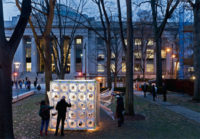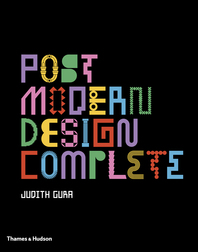Trisca Sociocultural Center
| Photo © Alan Karchmer |
Trisca Sociocultural Center, John Hejduk, Santiago de Compostela, Spain |

The late John Hejduk carved out a reputation as an influential educator when he was dean of Cooper Union’s School of Architecture in New York (1975 to 2000) and as a visionary artist in a practice-bound discipline. He built relatively little in his lifetime. Ironically, now two of Hejduk’s projects have been realized in Santiago de Compostela, Spain, both finished after his death in 2000.
The first is already well known: the John Hejduk Memorial Towers, twin, 82-foot-high steel-frame structures, one clad in glass and the other in granite, which loom up poignantly on the corner of the City of Culture of Galicia. Conceived in 1992 as a botanical research center for Santiago, the towers were finally built when the architect for the massive cultural complex, Peter Eisenman, proposed them for this hilly site overlooking the medieval pilgrimage city.
A distinct surprise arrives in discovering another Hejduk work in Santiago. The Trisca Sociocultural Center opened on the city's R'a da Trisca in 2003, providing multiuse gathering spaces for residents of the San Pedro Neighborhood. Because of its triangular shape and rounded bull-nose corner, the tiny 4-story high tower (with a roof terrace) looks like a mini-Flatiron Building. The concrete-frame building with granite cladding was commissioned by the Centros Socioculturales de Santiago in 1997, while Hejduk was still alive, and completed after he died by Antonio Sanmartin and Elena Canovas of the Spanish firm aSZ Architects.
While some of the finishes and details vary from the original design, the intimacy of the spaces and the manner in which natural light enters from chutes diagonally penetrating the rear elevation make the interior memorable. Windows wrapping around the curved corner afford more light and view for the one-room-per-floor triangular meeting rooms. The diminutive 6,458 square-foot tower seems to be quite popular with the neighborhood residents who enter from the street. On a given day, people from the neighborhood can be found playing cards, reading papers, or having meetings. Or they might stare up at the ceiling on the main floor where a Hejduk drawing, a site plan for “Wedding in a Dark Plum Room” (1996), has been inscribed in the concrete ceiling.









Post a comment to this article
Report Abusive Comment